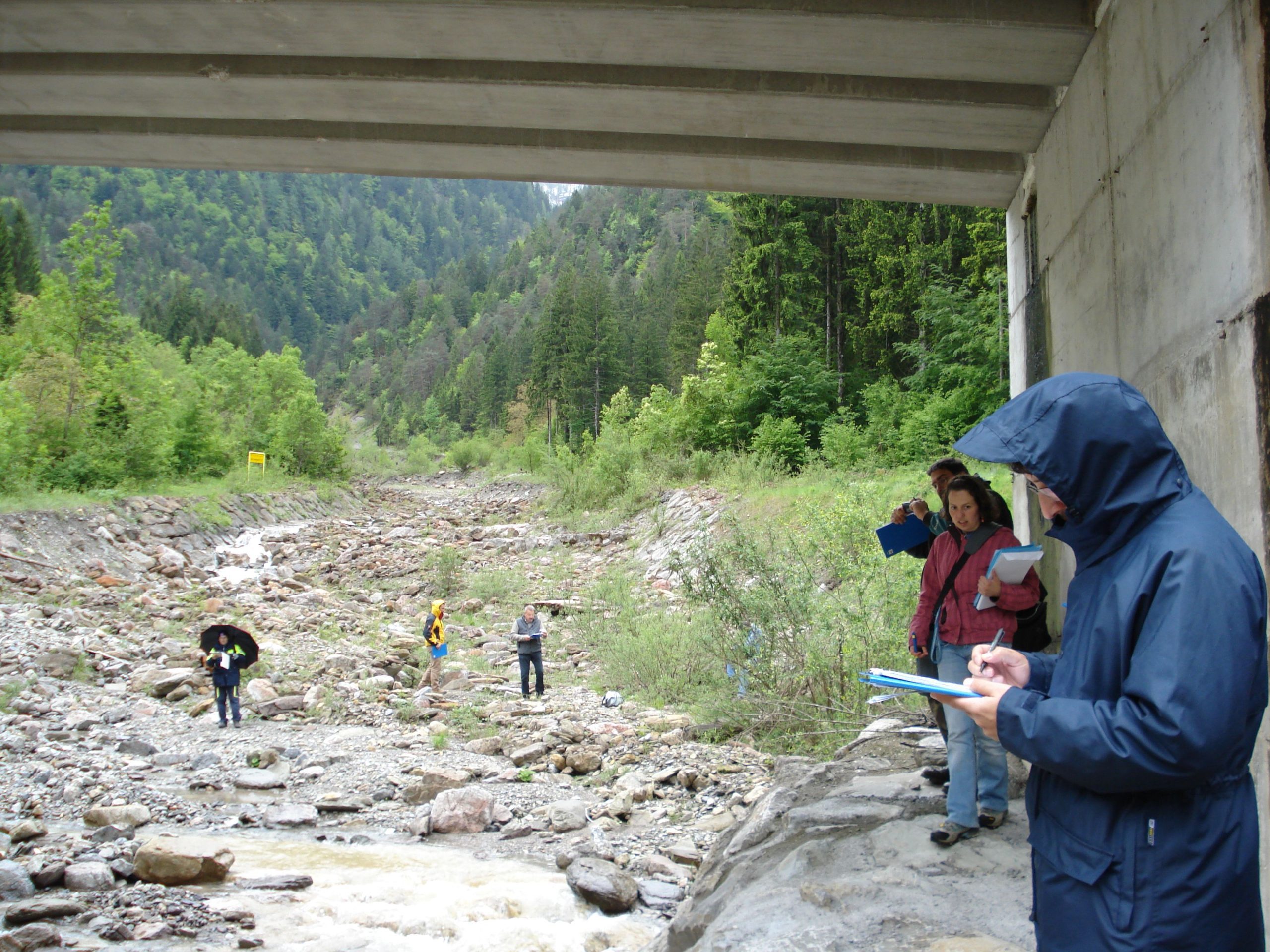Depopulation and dwindling funds have made Italian water managers resourceful. Why not have trained volunteers perform inspections of river dams? Dr. Juliette Cortes set up and tested a hydraulic inspection system.
The mountainous Fella valley in northern Italy (Friuli Venezia Giulia region) is prone to sudden floods of water and debris, and the expectation is that such sudden floods will become more frequent as climate change results in more intense rainfall. Population decreases as more inhabitants shift from the valley to the cities but exposure increases due to built areas for tourism and transport infrastructure. At the same time, rivers in the region have many different types of protecting structures that need to be regularly surveyed. This need puts pressure on the manpower for the inspection. Hence the idea of involving volunteers in the proactive inspection of these dams.
PhD candidate Juliette Cortes Arevalo has set up such an inspection system in collaboration with the technicians in charge in the Italian region. Coming from Colombia, where the emergency services are less developed than in Europe, she knew that citizens were often the first in line in emergency situations. She was motivated to investigate a more proactive role for the people in risk mitigation.
Cortes explains that she simplified existing inspection forms in the Friuli region together with those from neighbouring regions (the Province of Bolzano and the University of Padova) as a starting point. She iteratively adapted them with the technicians-in-charge. She had technicians and volunteers in the Fella valley filling out reports based on visual inspections. The results showed that not surprising perhaps, the volunteers had a higher variance in their reports than the technicians. But also that the reports of the professionals, although more precise, showed differences in judgments.


Forms & Trust
To deal with limitations of visual inspections, she decided that the evaluation of inspection forms needed more structure, including categorizing of the conditions of the structure. For example, is the dam in order (1), does it have slight deterioration without cracks(2), does it have visible cracks(3), are parts missing(4) or is the stability in danger (5)? The resulting inspection form is highly structured with little drawings explaining what is meant by the visibility of the lower part of the dam, for instance.
Aggregated inspection forms are the input for the water management agency. In the process, the inspection results are categorized according to the damage, obstruction and erosion level in the check dams to prioritise actions to be taken.
Cortes sees her work as a first step to support the use of inspections by volunteers. She recommends further research to improve the evaluation of the inspection reports. Moreover, volunteers’ involvement requires understanding motivational aspects, finding necessary resources and coordination of all actors.
“It works two ways,” she explained. “Management has to be able to trust the data they’re getting from the citizens. Meanwhile, citizens need to be able to trust the water management to remain involved. Not only in the inspections, but also in proactively mitigating their exposure to flood in their habitat.”
Looking ahead
A smartphone application could improve the inspections by providing GPS tags, and by providing reference images as guidelines for photos made by trained volunteers. Cortes did make some screen sketches based on the paper forms to get the imagination going, but she didn’t have time to develop a functional application.
When asked if a volunteer-based inspection scheme could work in the Netherlands as well, her PhD supervisor Professor Nick van de Giesen replied “The most obvious way in which volunteers could help in the Netherlands with checking hydraulic structures is with our dikes. There is actually a ‘dijkleger’ (dike army) that can be mobilized during times of high water to control dikes 24 hours per day. These are volunteers but they are trained and receive compensation for their work. As such, it differs from the subject of Dr. Cortes, which concerned volunteers without payment. It is unlikely that the dike army will be replaced by 100% volunteers as one needs to be able to rely on them in times of floods. For other tasks, such as sending pictures of staff gauges, cleaning of canals, checking water quality, etcetera there is undoubtedly more room for citizen involvement in managing our water system.”
• Vivian Juliette Cortes Arevalo, Use of volunteers’ information to support proactive inspection of hydraulic structures, PhD supervisors Prof. Nick van de Giesen (Faculty of CiTG) and Dr. Thom Bogaard in collaboration with the National Research Institute of Italy (CNR-IRPI), Defense: April 26 2016.



Comments are closed.